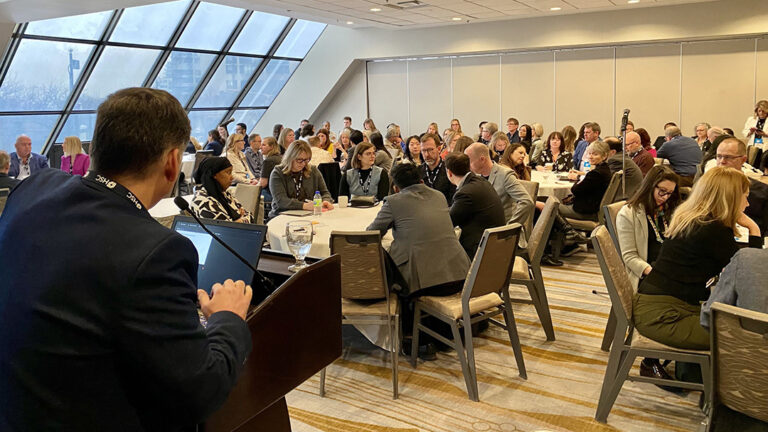Journeys to Home is a research-action and advocacy project whose foundation is the personal stories of Torontonians touched by housing precarity.
While homelessness is often perceived as an individual sleeping rough, the reality is that it not only has many faces, but also many locations. In fact, 1 in 10 Canadians have experienced a type of homelessness at some point in their lives. Melody Li, executive director at Homeless Connect Toronto, hears these personal stories, both familiar and unique, almost every day.
“Individuals have disclosed to us they are living, you know, at a friend’s house and they’re living on someone’s couch. That’s not their permanent address and they don’t have one,” shares Li.
Such untethered living situations are both physically and emotionally draining, and an inability to get permanent housing makes a person more vulnerable to sexual exploitation, victimization, and a loss of identity.
Li points out that a lot of people experiencing homelessness rely on disability pensions to survive. But the cheques are not nearly enough to cover housing.
“We crunched the numbers. And for someone who’s on [Ontario Disability Support Program], they get $500 a month to spend on housing and shelter costs, but you can’t rent anything for $500 now. It’s almost impossible.”
In Toronto, where the average rent for a studio apartment is $1,800, people resort to living in cramped conditions, such as rooming houses where people rent a room, and share common living spaces like the bathroom and the kitchen. In most parts of Toronto, however, it’s not a legal form of housing, which further marginalizes the precariously housed, according to Li.
“It’s quite common. Some people are facing possibly losing affordable housing, because they don’t have tenant rights in the same way, or they’re fearful of being evicted if they were to report their quote-unquote landlord.”
Connecting the dots
Homeless Connect Toronto (HCT) is a non-profit that coordinates “one-stop-shop” events, where they bring together essential resources such as ID clinics, health care, and employment and housing information. The goal is to make it easier for those at risk of, or experiencing, homelessness in Toronto to connect the dots in their lives. It is inspired by Project Homeless Connect, which has been implemented by 221 communities since its humble beginnings in San Francisco three decades ago.
“We’re not a housing provider, but our role in the sector is about connecting individuals who are on a continuum of being housed or unhoused to things that they need,” says Li. “And the question for us often has been ‘what do people need to help stay housed,’ right?”
During the Covid-19 pandemic, HCT staff saw formal and informal social-support networks being shed. The question became: how important were these supports in helping people to not only get housing, but to keep it?
This reflection sparked the initiative Journeys to home: discovering pathways out of homelessness, a tenant-led action-research project and advocacy campaign. Tapping into the knowledge of those with lived experience of homelessness in the development of solutions and in advocacy, the desired result is a broader consensus on how to support individuals affected by homelessness. The publication of a community tenant toolkit is also anticipated.
The project method is based on ethnography—exploring cultural phenomena from the point of view of the subject of the study—through storytelling.
So far, that has led to interesting conversations and realizations.
“It’s really about going out and seeing and speaking to people directly. It’s uncovering the true stories that people are experiencing, through their perspectives,” explains Georgia Mackenzie-Macpherson, lead designer and coordinator of the project with HCT and MAC / MAC Design.
The ethnographic process design and research is being supported by InwithForward a social design agency.
“So, the way that we are doing the research over the course of the year is through several different contact points. One perspective is understanding what fundamental friction points or barriers operators or landlords face in housing this population.”
“The other perspective is directly from the tenants and residents that we’re working with, who we are doing the longer, deeper story development with, and really working with them over a period of time to engage them in the whole project,” adds Mackenzie-Macpherson.
Different perspectives
The Community Housing Transformation Centre has awarded $85,000 to HCT to get the project off the ground.
“The grant has been fundamental in enabling us to be able to work with individuals with lived experience, pay community researchers and participants whose stories are being told,” Mackenzie-Macpherson says. “It will also support the process, design of tenant resource kit and publication of the advocacy campaign, which is really geared towards helping the broader community understand this problem.”
Hearing from people with lived experience of homelessness and in different stages of the housing continuum—homeless, living in emergency shelters, or transitional housing—is imperative to develop efficient and meaningful pathways out of homelessness. Mackenzie-Macpherson stresses the importance of listening to marginalized voices.
A 2019 CBC news story on homelessness in Toronto, for example, scratches the surface of the failure to meet the real needs of those struggling to stay sheltered.
Casually dressed in jeans and a fitted coat, Paul looks like every other passerby heading to work on this early morning in Toronto. However, after hurting his back and losing his job six years earlier, he now sleeps at an emergency shelter, having joined the ranks of the hidden homeless, defined as people whose housing situation is “temporary or lacks security of tenure”, according to the Canadian Observatory on Homelessness.
“There are so many different types of homeless people in this city,” Paul tells the reporter. “People who fall on hard times, get divorced, lose their job, get a work injury. It’s not just the bums you see on the street—we’re everywhere now.”
For Mackenzie-Macpherson, “It’s not so easy just to house people, you know. But it’s possible if we think about this problem from different perspectives.”



